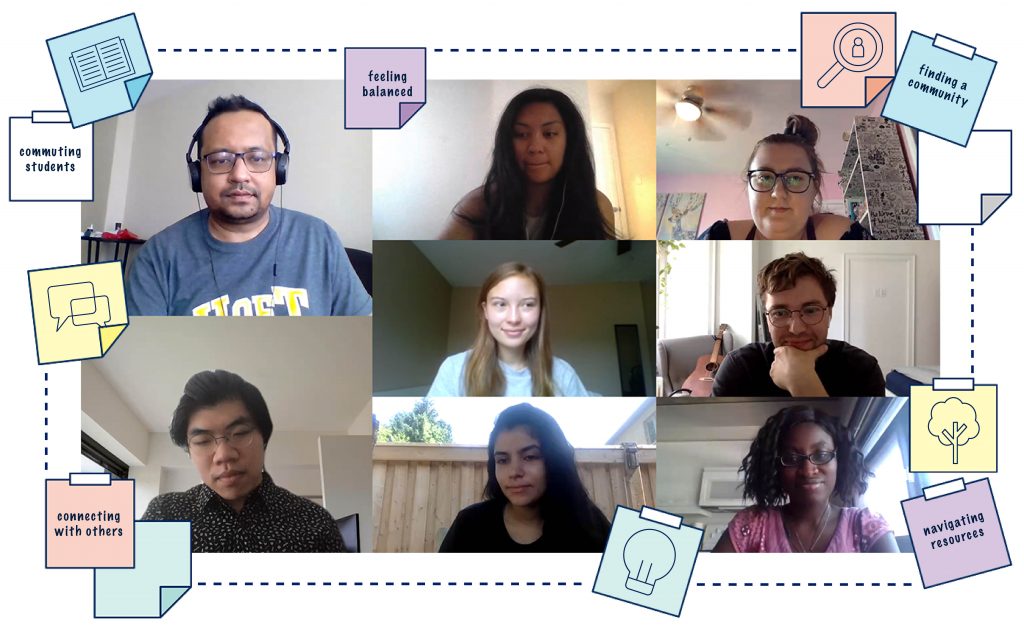By Terri-Lynn Langdon, Lead Editor and Writer – in collaboration with Johanna Pokorny (Ethnography and Insights Team Lead) and Danielle Baillargeon (Data Analysis Team Lead)

At the Innovation Hub an intended focus of our research as a by and for student research Hub at U of T is empathy and the tapestry of it in the development of our questions, writing, and its role in research findings.
[1]The research process at the Innovation Hub includes design thinking supported by ethnographic research methodology, which seek to understand people in context. Where other qualitative methods (like survey work) operate through “extracting” data, ethnography is wholistic and expanding. The goal is not to be ‘statistically significant’ but rather to identify insights and themes from a few rich and unique stories.
I had the opportunity to sit down with the very busy Data Analysis team and the Ethnography and Insights team at the Innovation Hub. I spoke with Johanna Pokorny who is the Ethnography and Insights Team Lead as well as Danielle Baillargeon, the Data Analysis Team Lead about their research methodology and how they elicit meaningful stories for research at U of T.
Both Danielle and Johanna shared that their approach to research is to centralize students as the experts throughout the process, findings and report writing. Danielle shared that a myth of data analysis is that it is dry tedious work and from her point of view the data is actually very emotive. For this reason, the data often elicits a strong emotional response in the student-researchers because some student interviewee’s shared in depth struggles that they have experienced while being students at U of T. Johanna shared that she has read many emotive transcripts with tensions and contradictions and as a PhD candidate herself she has lived some of these things as well which can be eye-opening. She adds that, The storytelling element to the data is what brings it to life and makes it both accessible and meaningful to the U of T community at large. Both Danielle and Johanna shared that they learn on fellow student researchers for support with some of the more challenging stories and barriers that student interviewees are so generous in sharing.
Any kind of data analysis at the Innovation Hub is a big job and it is one with a particular focus on the diversity of the needs of students on campus at U of T. Currently, this team is busy working with 6 different projects, these are: the Applied Learning Project, Domains Project, Food Insecurity Project, Engaging International Students Project, Supporting Students with Disabilities Project, and the Transforming the Instructional Landscape Project.
Johanna shared that as a student researcher at U of T she has learned a lot about what it is like to be a student at U of T across programs and degrees. The goal of each of the projects above is to identify gaps in services and learning for U of T students and staff/community members at U of T to come up with human-centered solutions, and always with an equity and anti-oppressive lens. Through this process the Innovation Hub has also been able to design two emergent student-facing projects: Stories from a Distance and Redefining Traditional. While these are not explicitly rooted in data analysis, they have been developed through a deep understanding our data, engaging with a scope of diverse perspectives and addressing intersectional student needs.
When I asked Danielle about asking inclusive research questions and the specific skill involved in this task she shared that, “Interviewee’s often reveal the limits of research questions, and so the task of the researcher is that they can throw out the existing research questions based on (often times more insightful) student responses.” In my view, that is a beautiful example of what student engagement in research should look like!
[1] Design Research Process Guide, Innovation Hub, University of Toronto, May 2020
0 comments on “The E-Motion of Research at the Innovation Hub”